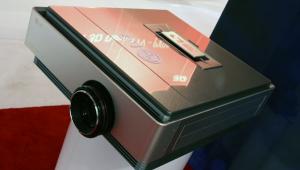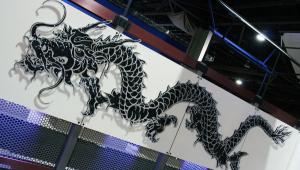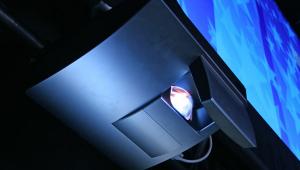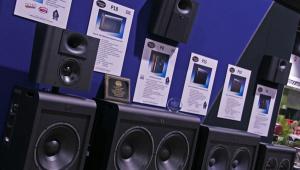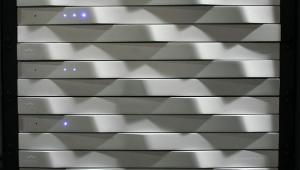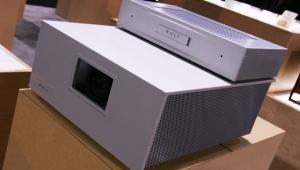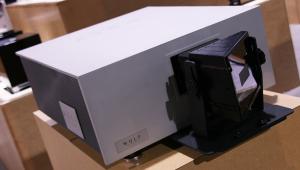Runco With Danish

Runco's 3D architecture is based on a projector with two completely separate light engines and two lenses, both enclosed in the same case. Each engine/lens serves one eye image. Together with passive polarized 3D glasses, the separate light paths provide full and simultaneous 1920 x 1080p images to each eye. The 3D glasses will be made available in standard, clip-on, and (in the future) prescription versions. The projector is the D-73d ($50,000), fitted with a single chip DLP in each light path. It was demonstrated to the CEDIA press on a Korea-sourced MOCOMTECH silvered screen with a gain of 10!
If that was an accurate figure, I was surprised to see no obvious hot spotting, combined with a very good image apart from what appeared to be oversaturated color. The creative default settings of Runco's Personal Color Equalizer (PCE) is designed to produce a wider than standard color gamut, and was clearly in use for the demo. More accurate settings are available to the user, if desired.
Runco also announced several other new products, including the Q-1500d, said to be the brightest 2D, LED-lit home theater projector ($40,000). Like the D-73d, it also uses two separate light engines and lenses (with a single chip DLP in each path), but in this case to the two are used to increase brightness, not to produce 3D.
Also shown were three stylish Vistage flat panels, at 50-, 58-, and 63-inch sizes. The technology was described as an "Emissive Cell Structure." Can you say plasma, boys and girls? Apparently not when the projected prices top out at around $10,000.
- Log in or register to post comments

